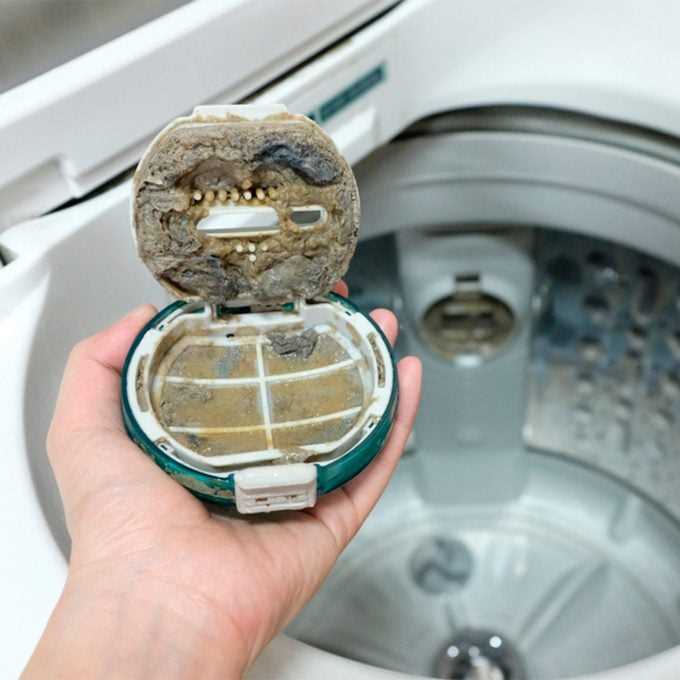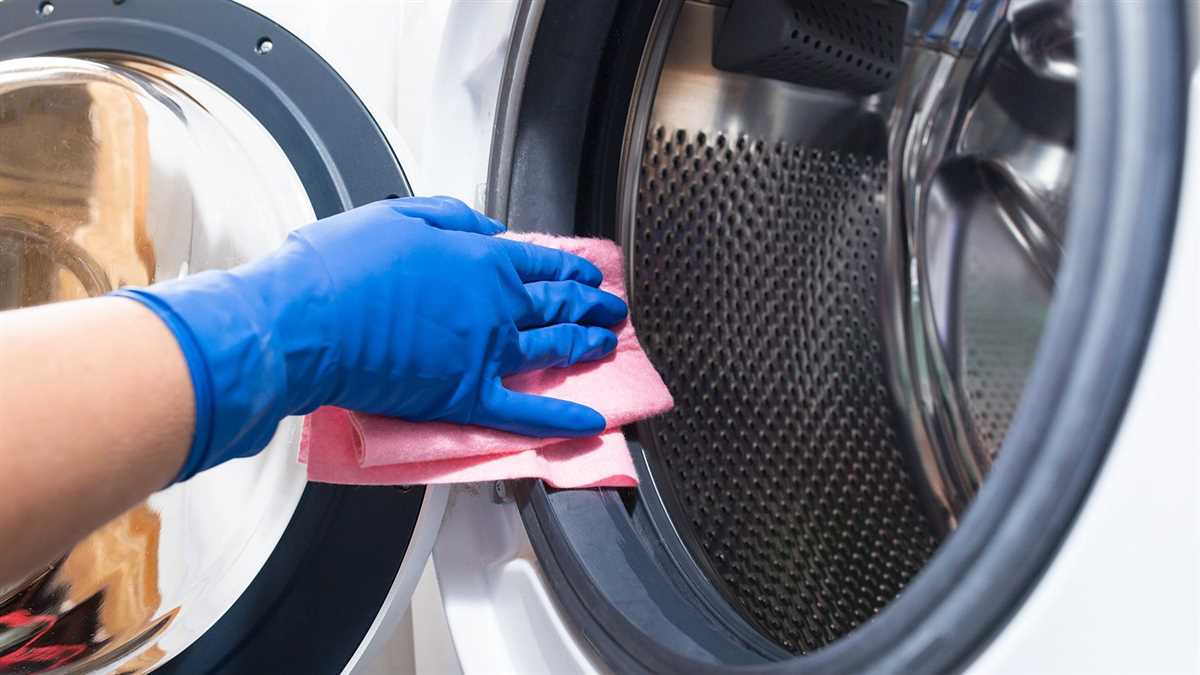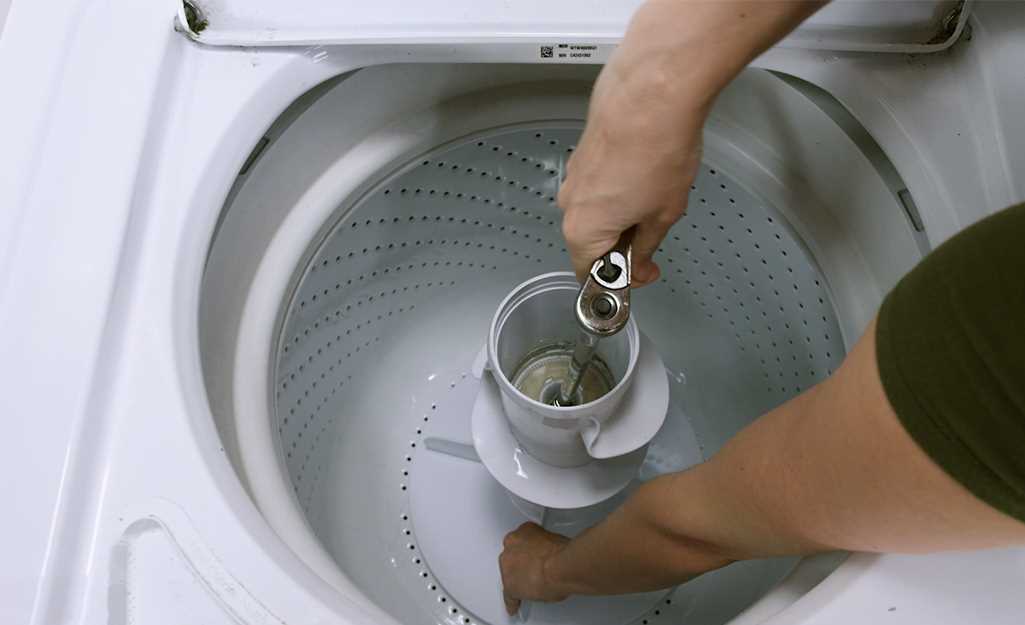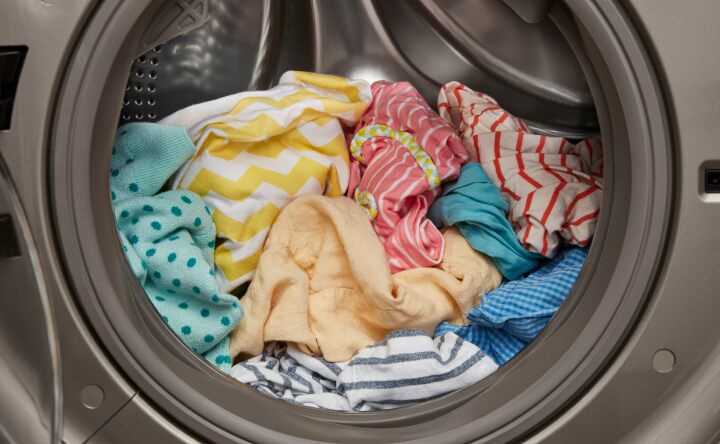




Do you ever wonder how your clothes get so clean after being tossed around in a washing machine? Washing machines have become an essential appliance in households around the world, but many people don’t fully understand how they work to remove dirt and stains from their clothes. In this ultimate guide, we will dive into the cleaning process of a washing machine and discover the inner workings that enable it to efficiently clean clothes.
The cleaning process in a washing machine involves a combination of mechanical action, detergent, and water temperature. When you load your clothes into the washing machine and start the cycle, the machine begins to agitate and move your clothes around. This mechanical action helps to loosen and dislodge dirt particles from the fabric. The washing machine’s drum has paddles or fins that create a tumbling motion, ensuring that each item of clothing is thoroughly washed.
But what about stains? For those stubborn stains that are resistant to normal washing, the washing machine relies on the power of detergent. Detergents contain surfactants, enzymes, and other chemicals that work together to break down dirt and stains at a molecular level. When the detergent comes into contact with the fabric, it helps to lift and suspend the dirt particles, allowing them to be easily rinsed away.
Water temperature also plays a crucial role in the cleaning process. Depending on the settings you choose, the water in the washing machine can be hot, warm, or cold. Hot water is effective at removing grease and oil stains, while cold water is best for delicate fabrics and preventing color fading. Warm water is a versatile option that works well for most everyday clothing items.
Once the clothes have been thoroughly washed and any stains have been removed, the washing machine enters the rinse cycle. During this stage, fresh water is used to flush away any remaining detergent and dirt. The washing machine spins rapidly to remove excess water from the clothes, helping them to dry faster once they are removed from the machine.
In conclusion, washing machines use a combination of mechanical action, detergent, and water temperature to effectively clean clothes. By understanding the cleaning process, you can make the most out of your washing machine and ensure that your clothes are left fresh and stain-free after every wash.
How Does a Washing Machine Clean Clothes?

A washing machine is an essential appliance used for cleaning clothes efficiently. But have you ever wondered how a washing machine actually cleans your clothes? In this article, we will explore the cleaning process and the mechanisms behind it.
The Basics
At its core, a washing machine uses a combination of water, detergent, and mechanical action to remove dirt, stains, and odors from your clothes. The process typically involves several stages, including:
- Filling the drum with water
- Agitating the clothes
- Emptying the dirty water
- Rinsing the clothes
- Spinning to remove excess water
The Cleaning Process
Let’s take a closer look at each stage of the cleaning process:
- Filling the drum with water:
- Agitating the clothes:
- Emptying the dirty water:
- Rinsing the clothes:
- Spinning to remove excess water:
The first step is to fill the washing machine drum with the appropriate amount of water. The water level may vary depending on the load size and program selected.
Once the drum is filled with water, the agitator or the drum itself starts rotating in either direction. This movement helps dislodge and loosen dirt, stains, and other particles from the fabric.
After the agitation process, the washing machine drains the dirty water out of the drum. This helps remove the loosened dirt and detergent residue.
Next, the washing machine refills the drum with clean water for rinsing. The agitator or drum then rotates again to ensure the clothes are thoroughly rinsed and any remaining detergent is removed.
Finally, the washing machine enters the spin cycle, where it rapidly spins the drum to remove excess water from the clothes. This makes the drying process faster and more efficient.
Detergents and Temperature

In addition to the mechanical action, detergents play a vital role in the cleaning process. They work by breaking down dirt, stains, and oils, allowing them to be easily washed away. The temperature of the water also plays a part, as hotter water can help dissolve dirt and stains more effectively.
Conclusion
A washing machine combines water, detergent, and mechanical action to clean your clothes. Understanding the cleaning process can help you make the most of your washing machine and ensure your clothes come out fresh and clean every time.
Understanding the Cleaning Process
Washing machines have become an essential appliance in most households, as they efficiently clean clothes and save time and effort. Understanding how a washing machine cleans clothes can help us appreciate its functions and optimize its usage.
The Four Basic Steps:
- Agitation: The washing machine fills with water and the agitator or impeller moves back and forth, creating friction and dislodging dirt and stains from the fabric. This mechanical action, combined with the detergent, helps break down and remove stains.
- Detergent Action: The detergent contains a mixture of enzymes and surfactants that help to dissolve and suspend dirt, oils, and stains in water. These substances penetrate the fibers of the fabric and help to lift and remove the particles during the washing process.
- Rinsing: Once the agitation and detergent action have loosened the dirt and stains, the washing machine drains the soapy water and refills with fresh water. The clothes are then rinsed to remove any remaining detergent and dirt particles.
- Spinning and Drying: The final step is spinning and drying the clothes. The washing machine spins rapidly to remove excess water from the clothes. This is achieved by centrifugal force, which pushes the water out of the fabric. Once the excess water is removed, the clothes can be hung or placed in a separate machine, such as a dryer, to complete the drying process.
Other Factors to Consider:
- Water Temperature: The temperature of the water used in the washing machine can affect the cleaning process. Hot water can help to kill bacteria and remove tough stains, while cold water is suitable for delicate fabrics and colors.
- Types of Detergents: There are various types of detergents available, including liquid, powder, and pods. Each type has its advantages and suitable applications. It’s crucial to choose a detergent that is compatible with your washing machine and appropriate for your clothes.
- Load Size: The amount of clothes you load into the washing machine can impact the cleaning process. Overloading can prevent proper agitation and rinsing, while underloading can cause an imbalance within the machine.
- Special Features: Modern washing machines often come with various special features, such as pre-soak, stain removal, and delicate cycles. These additional functions can enhance the cleaning process and provide tailored care for specific types of clothes.
Importance of Regular Maintenance:
To ensure optimal cleaning performance and the longevity of your washing machine, regular maintenance is essential. This includes cleaning the dispensers, filters, and drum, as well as checking for any blockages or issues that may affect the cleaning process. Refer to the manufacturer’s instructions for specific maintenance guidelines for your washing machine model.
Conclusion:

Understanding the cleaning process of a washing machine allows us to make informed choices regarding detergent selection, water temperature, load size, and maintenance. By following these guidelines, we can maximize the machine’s efficiency and keep our clothes clean and fresh.
The Role of Water
Water is an essential component in the cleaning process of a washing machine. It helps to remove dirt, stains, and odors from the clothes. In fact, water is often considered as the universal solvent, meaning it has the ability to dissolve a wide variety of substances.
Here are some ways in which water plays a crucial role in cleaning clothes:
1. Detergent Activation
Water acts as a medium for activating the detergent. When detergent is added to water, it forms a solution that helps to break down dirt particles and stains. The agitation of the water during the washing cycle helps to distribute the detergent evenly throughout the clothes, ensuring a thorough clean.
2. Suspension of Dirt and Stains
Water suspends the dirt and stains that are released from the clothes. As the clothes are agitated in the water, the dirt particles and stains are lifted away from the fabric and kept in suspension. This prevents the dirt from re-depositing on the clothes during the washing process.
3. Rinse Cycle
Water plays a vital role in the rinse cycle of a washing machine. During this cycle, clean water is used to remove any remaining detergent residue and suspended dirt particles from the clothes. This ensures that the clothes are left fresh and free from any detergent build-up.
4. Temperature Control

Water also helps in controlling the temperature during the washing process. Different types of fabrics require different water temperatures to clean effectively without causing any damage. Washing machines have settings that allow users to choose the appropriate water temperature for the specific fabrics being washed.
5. Steam Cleaning
Some advanced washing machines use steam to clean clothes. Steam has the ability to penetrate deep into the fabric fibers and remove stubborn stains and odors. Water is heated to produce steam, which is then released into the drum during the cleaning process.
Conclusion
Water is an essential element in the cleaning process of a washing machine. It helps to activate the detergent, suspend dirt and stains, rinse the clothes, control the temperature, and even aid in steam cleaning. Without water, the cleaning process would not be as effective and efficient.
In Removing Stains and Dirt

One of the main purposes of a washing machine is to remove stains and dirt from clothes. This is achieved through a combination of mechanical action, detergent, and water temperature.
Mechanical Action
The washing machine’s drum rotates or agitates, creating friction between the clothes. This friction helps to dislodge dirt and stains from the fabric’s surface.
Detergent
Detergent plays a critical role in the cleaning process. It contains surfactants that help to loosen and remove stains by reducing surface tension. Surfactants surround and lift dirt particles, allowing them to be washed away with water.
When choosing a detergent, it’s important to consider factors such as fabric type, stain type, and water hardness. Different detergents are formulated to tackle specific stains and fabric types, ensuring optimal cleaning results.
Water Temperature
The water temperature also affects the cleaning process. Hot water is more effective at dissolving greasy stains, while cold water is suitable for delicate fabrics or garments with colorfast dyes.
Most washing machines offer different temperature settings, allowing users to adjust according to their specific cleaning needs. It’s essential to follow garment care labels and the washing machine’s instructions to prevent damage or color fading.
Pre-treating Stains
For stubborn stains, pre-treating is often necessary. Pre-treatment involves applying stain removers directly to the affected area before washing. Stain removers contain enzymes or other specialized chemicals that help break down and remove specific types of stains.
Pre-treating can be done manually or using specialized pre-treat functions available in some washing machines. After pre-treating, the stained garment can be added to the washing machine for a thorough cleaning cycle.
Summary
In summary, washing machines remove stains and dirt through the combined action of mechanical friction, detergent, and water temperature. The mechanical action agitates the clothes, while the detergent and water work together to lift and dissolve stains. By adjusting temperature settings and pre-treating stubborn stains, users can achieve optimal cleaning results for their clothes.
The Importance of Detergent
Detergent plays a crucial role in the cleaning process of a washing machine. It is not just an optional addition, but an essential component necessary for achieving clean and fresh-smelling clothes. Here are a few reasons why detergent is important:
- Breaking Down Dirt and Stains: Detergent contains surfactants that help break down and remove dirt, oil, stains, and other substances that may be present on the clothes.
- Emulsifying Oils and Grease: Detergent contains emulsifiers that help dissolve and remove oils and grease from the clothes, ensuring they come out fresh and clean.
- Killing Bacteria and Germs: Some detergents are specially formulated with antibacterial properties, which help in killing bacteria and germs present on the clothes, ensuring hygienic and clean laundry.
- Preventing Fabric Damage: Detergent is formulated to be gentle on fabrics while effectively cleaning them. It helps prevent damage to the clothes, such as fading, shrinking, or weakening of the fibers.
- Enhancing the Cleaning Process: Detergent enhances the washing machine’s cleaning process by facilitating the removal of dirt, stains, and odors. It helps the water penetrate the clothes better and ensures thorough cleaning.
It is important to choose the right detergent for your washing machine and the type of clothes you are washing. There are various types of detergents available, including liquid, powder, and pods, each designed for different washing machine models and fabrics.
Following the manufacturer’s instructions for the correct amount of detergent to use is also essential. Using too little may result in inadequate cleaning, while using too much can lead to excessive sudsing, residue, and rinsing problems.
Overall, detergent is a vital component of the cleaning process in a washing machine, ensuring that your clothes come out clean, fresh, and free from dirt, stains, and bacteria.
In Breaking Down Grime and Oils
One of the key functions of a washing machine is to break down and remove grime and oils from clothing. This is accomplished through a combination of mechanical action, water, detergent, and heat.
Mechanical Action
The mechanical action in a washing machine refers to the movement of the agitator or the drum. When the machine is in operation, the agitator or drum rotates, creating a tumbling motion that helps to loosen dirt, grime, and oils from the fabric.
Water
Water plays a crucial role in the cleaning process. It helps to dissolve and suspend dirt and oils, allowing them to be washed away. The amount of water used in a washing machine depends on the selected wash cycle and the size of the load. The water is typically mixed with detergent to create a cleaning solution.
Detergent
Detergent is a cleaning agent that helps to remove dirt, grime, and oils from clothing. It contains surfactants that reduce the surface tension of water, allowing it to penetrate the fabric and effectively lift away stains and soiling. Detergents also contain enzymes and other additives that enhance the cleaning process.
Heat
Heat can enhance the cleaning process by helping to break down oils and grease. Most washing machines have a heating element that can heat the water to different temperatures, depending on the selected wash cycle. Hotter water temperatures can be particularly effective at removing oily stains and killing bacteria.
Overall, the combination of mechanical action, water, detergent, and heat works together to break down grime and oils, lifting them away from the fabric and leaving clothes clean and fresh.
The Power of Agitation
Agitation is a key component of the cleaning process in a washing machine. It plays a crucial role in removing dirt, stains, and bacteria from the fabric.
When you start a wash cycle, the machine fills with water and the detergent is added. This is when the agitation begins. Agitation refers to the back-and-forth motion of the agitator or the drum in a modern front-load washing machine. It helps to loosen the dirt and stains from the clothing and allows the detergent to penetrate the fibers.
The agitator:
In top-load washing machines, the agitator is a mechanism located in the center of the drum. Its purpose is to create turbulence in the water, causing the clothing to move around vigorously. The agitator has fins or paddles that push and pull the clothes, creating friction and dislodging the dirt.
The drum:
Front-load washing machines do not have an agitator. Instead, they have a drum that rotates back and forth. The clothing is lifted and dropped repeatedly as the drum rotates, mimicking the agitation action. The movement of the drum causes the clothes to rub against each other, helping to remove stains and dirt.
Agitation is an important step in the cleaning process as it promotes the removal of dirt, stains, and bacteria. Without agitation, the detergent would not be able to effectively clean the clothes. It is especially important for heavily soiled items, as the agitation helps to break down and remove tough stains.
In addition to cleaning, agitation also helps to prevent tangling and twisting of the clothes. The constant movement and interaction between the garments ensure a thorough cleaning without damaging the fabric.
Conclusion:
Agitation is a vital part of the washing machine’s cleaning process. Whether it is the agitator in a top-load machine or the rotating drum in a front-load machine, the back-and-forth motion helps to loosen dirt and stains, allowing the detergent to work effectively. Agitation also prevents tangling and twisting of clothes, ensuring a thorough clean without damaging the fabric.
FAQ
How does a washing machine clean clothes?
A washing machine cleans clothes by combining several processes such as agitation, detergent, water, and spin cycles. The agitation process helps to loosen dirt and stains from the clothes, while the detergent helps to break down and remove the dirt. Water is used to rinse away the dirt and detergent, and the spin cycle helps to remove excess water from the clothes.
What is the purpose of agitation in a washing machine?
The purpose of agitation in a washing machine is to loosen dirt and stains from the clothes. Agitation is usually achieved by a rotating agitator or an impeller, which creates a back and forth motion to move the clothes against each other and the sides of the machine. This helps to dislodge dirt particles and ensure thorough cleaning.
How does the detergent clean the clothes?
The detergent in a washing machine works by breaking down and removing dirt from the clothes. It contains surfactants, which are compounds that help to reduce the surface tension of water and allow it to penetrate the fabric more easily. The surfactants also help to suspend dirt particles in the water, preventing them from redepositing onto the clothes.
What happens during the rinse cycle in a washing machine?
During the rinse cycle, the washing machine uses clean water to remove the dirt and detergent residue from the clothes. The machine typically fills with water and agitates the clothes to ensure thorough rinsing. The rinse water is then drained and fresh water is added for another rinse. This process is repeated multiple times to ensure all the dirt and detergent are removed from the clothes.
What is the purpose of the spin cycle in a washing machine?
The purpose of the spin cycle in a washing machine is to remove excess water from the clothes after they have been washed and rinsed. The machine spins the clothes at a high speed, creating centrifugal force that pushes the water out of the fabric. This helps to reduce drying time and ensure the clothes come out of the machine less damp.
How does a washing machine clean clothes?
A washing machine cleans clothes by agitating them in water along with detergent. The agitator or the drum continuously rotates in different directions, creating a scrubbing motion that helps remove dirt and stains from the fabric. The detergent helps to break down and remove grease, oil, and other types of stains. The water also helps to flush out the dirt and detergent from the clothes.
What is the cleaning process in a washing machine?
The cleaning process in a washing machine involves several steps. First, the clothes are loaded into the drum along with detergent. Then, the machine fills the drum with water of the desired temperature. The agitator or drum rotates, creating a scrubbing motion that helps loosen dirt and stains from the fabric. The detergent helps to break down and remove stains. After the agitation process, the machine drains the dirty water and rinses the clothes with clean water. Finally, the machine spins the clothes at a high speed to remove excess water. Some machines also have a drying feature.















